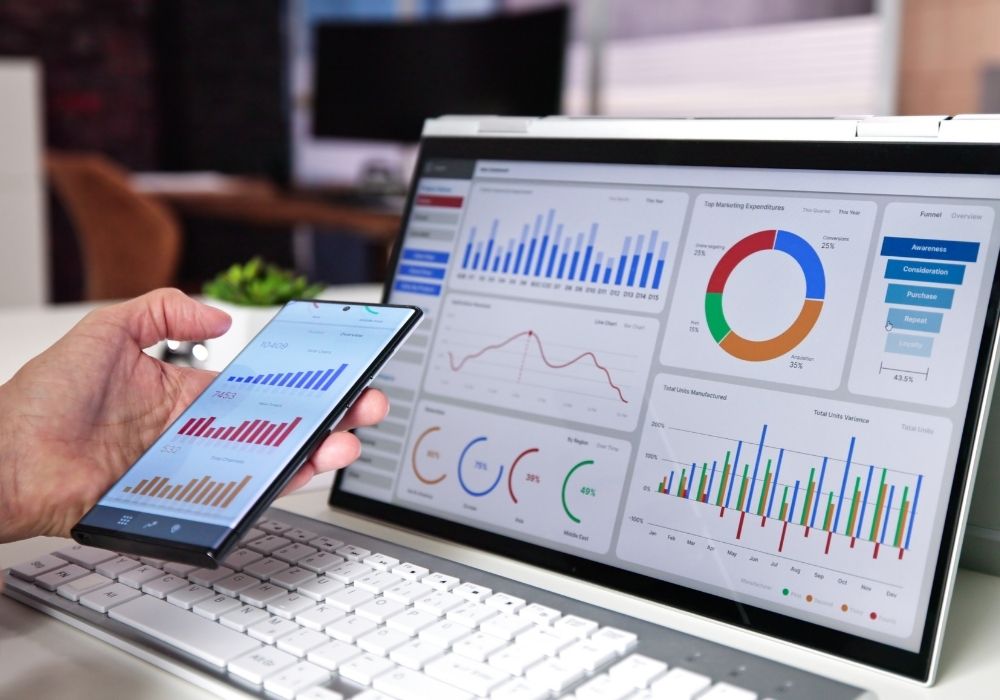Digital PR faces increasing challenges when it comes to measurement. As a hybrid of PR, content, SEO, and social media, it can often be difficult for clients to determine where digital PR budgets should come from within in-house teams. This can often result in Digital PR teams having several different stakeholders engaged in activity, meaning that the ‘success’ of work can mean very different things to each stakeholder.
This makes it crucial for Digital PR professionals to demonstrate meaningful ROI that aligns with the goals of different stakeholders.
Despite Google stating that the nofollow tag is a “hint, not a directive” (Search Engine Land) – and Rand Fishkin’s analysis of the 2024 Google leak revealing that Google assesses link value through numerous factors beyond the follow/nofollow attribute (read the write-up here) – many Digital PR professionals still battle outdated notions that only followed links matter.
In this blog, we explore the key metrics Digital PRs can report on to ensure they demonstrate value and ROI, no matter who the stakeholder is.
Jump to:
Is there a one-size-fits-all approach to Digital PR metrics?
No, unfortunately, there isn’t a magic master template when it comes to Digital PR metrics that agencies should be reporting on in 2025. But don’t panic, this is a good thing.
Because of the hybrid nature of Digital PR, agencies often work with different stakeholders within the same client organisation, each with unique goals and reporting requirements. This means that Digital PR metrics should be tailored to reflect what is most valuable to the client’s objectives.
Campaign activity can often intersect multiple divisions within client organisations, spanning SEO, brand, PR & Comms, social media and content, and so with many Digital PRs working across multichannel briefs, it’s natural that each brief will pose its own challenges and requirements when it comes to Digital PR metrics and reporting.
To make Digital PR’s impact more visible and valuable, reporting should focus on the specific goals of the stakeholders involved. Whilst this needs to be tailored to the brief in question, we’ve shared some key metrics to consider when determining how to measure the success of your Digital PR activity.
If your stakeholder is an SEO Lead 
Every time a client insists on only followed links, a Digital PR person somewhere dies inside. Okay, so this might be a bit dramatic, but the principle still stands; Digital PRs have been battling with the follow/nofollow conversation with clients for years.
Even though in 2019, Google announced that the nofollow tag would be treated as a hint, not a directive, meaning that even nofollow links can pass authority.
And even though Google’s leaked API documentation in 2024 highlighted that there are lots of different metrics that impact PageRank (check out Rand Fishkin’s analysis of this here), we still battle with the follow/nofollow request.
Despite this, many SEOs are still fixated by follows.
We’ve seen time and time again, client websites rank for competitive terms when the majority of the links built to client pages are no-follow.
If your client is fixated by follows, then whilst you’re educating them on the other important metrics of followed links, consider reporting followed links but supplementing them with additional insights, such as:
- Where your links point to: Links to category pages, product pages, or editorial pages help boost rankings.
- Internal linking strategy: The leaked Google API documents suggest that Google understands relationships between indirect links. If a high-authority website links to your campaign page, and that page links to a product page, Google may pass authority through to the product page. So having an internal linking strategy, and aligning this to your reporting metrics, will help to demonstrate this value to the client. Whilst this won’t be new to lots of DPR’s who are used to internally linking campaign pages to transactional pages, it’s important information for reinforcing the importance of this with clients.
- Relevancy and authority of links: Again, the leaked API documentation suggested that backlinks from relevant and high-quality sources carry more SEO weight, so reporting on domain authority is a great way to showcase this to clients.
- Contextual anchor text: The leaked documentation also suggests Google considers the terms surrounding anchor text, meaning even if exact-match anchor text isn’t possible, relevant surrounding text can still influence rankings. Tools like Ahrefs already pull through the text surrounding the anchor text, so DPRs can analyse the key messaging that’s included here.
Any Digital PR knows that it can be tricky to get an exact match anchor text and that it’s down to the journalist’s discretion which links they decide to include in the coverage – or in even trickier circumstances, the editorial guidelines of the website in question (meaning it’s even out of the journalist’s control).
However, it’s good news for DPRs, as the leaked Google API documentation suggests that Google can understand “the hash of terms surrounding the anchor” and that these are factored into ranking decisions. So, whilst DPRs may struggle to get an exact match anchor text for clients, the surrounding terms of the anchor text will still be included in the ranking decision. The easiest way to influence this is by including brand references alongside anchor texts, for example for our electricals client AO.com, we use the phrase “the UK’s leading electricals retailer” alongside branded anchor text, or for our client TakingCare, we used the anchor text “TakingCare Personal Alarms” or “TakingCare, leading personal alarms retailer”.
- Page ranking improvements: Monitor keyword rankings for pages you’re building links to. If you’re working closely with the SEO team, you should have a clear objective of trying to improve the rankings of the page that you’re building links into, so monitor the page for keyword improvements.
- Referral traffic: Track traffic coming from media placements.
- Clicks and impressions from Google: Use Google Search Console to monitor search performance for targeted URLs.
- Traffic to campaign pages: Measure overall visits and engagement on campaign content.
If your stakeholder is an Ecommerce Lead
For ecommerce brands that are building their SEO strategy, Digital PR can be a powerful tool for driving increases to organic revenue, product visibility and website traffic.
Key ecommerce Digital PR metrics to consider in your reporting include:
- Organic revenue from target URLs and product pages: If your campaign promotes specific products, check for revenue increases from organic and referral traffic.
- SEO performance improvements: Track increases in organic traffic and conversions for category and product pages that your PR campaign supports.
- Referral traffic spikes: Identify referral-driven traffic increases aligned with outreach activity.
If your stakeholder is in the Brand, PR, or Communications Team
For brand, PR, and comms teams, Digital PR success is often tied to reputation and visibility. These teams are likely more engaged in metrics that reflect an overall uplift in brand awareness and trust.
Key Digital PR metrics to consider including in your reporting include:
- Increase in brand search volume: If your campaign improves brand awareness, you should see an uptick in search interest. Check the search volumes for brand terms that are relevant to your campaign. For example, if your campaign is focused on washing machines, then check for improvements to terms around “[client name] washing machine”, as well as general brand searches.
- Increase in clicks for brand terms: Higher engagement with branded search queries can indicate growing consumer interest. Use Google Search Console (GSC) to monitor these.
- Media profile alignment: Assess whether media coverage aligns with your target audience and customer demographics. For example, have you targeted your outreach to media placements in locations where your target customers live? Report on this.
- Media reach: Track the total potential audience for your media placements. This one can be a bit hit-and-miss with clients, as some teams think reach figures, which essentially calculate how many readers may have seen your article, are inflated or simply vanity metrics. However, brand teams who engage in lots of advertising practices may value seeing the potential reach of coverage.
- Sentiment analysis: Measure positive, neutral, or negative sentiment in media coverage to assess brand perception.
If your stakeholder is in the Content Team
Content teams focus on maximising the impact of campaign assets across multiple channels, spanning website content, social media, influencers, email marketing and more.
Useful Digital PR metrics for content-focused stakeholders include:
- Clicks to campaign pages from SERPs: Track search engine performance for campaign-related pages.
- Website views and traffic: Measure traffic spikes on content assets created for the campaign.
- Social media reach and engagement: Monitor interactions, shares, and engagement rates on social media posts featuring Digital PR content.
- Influencer reach and engagement: If influencer collaborations are part of your strategy, track audience engagement with their content.
- Maximised content use: influencer agreements are costly for brands, so DPRs can help teams to maximise these arrangements by working across departments to best use the content, for example:
- Working with SEO teams to leverage influencer bios on the website to improve E-E-A-T (Experience, Expertise, Authoritativeness, and Trustworthiness) signals.
- Ensuring influencer-generated content is repurposed into high-ranking how-to guides or tips pieces, and integrated into Digital PR campaign landing pages.
- Using influencer insights to earn additional media links and citations through outreaching influencer content to target publications.
Final thoughts: Tailoring Digital PR metrics for maximum impact
Digital PR measurement is not one-size-fits-all. Digital PR activity often intersects with SEO, content marketing, brand teams and ecommerce leads, so the best way to demonstrate success is by aligning Digital PR reporting metrics with client goals.
While traditional PR metrics like media placements and reach remain important, modern Digital PR reporting should incorporate SEO impact, content performance, and revenue contribution to provide a holistic view of success.
By using tailored metrics that resonate with different stakeholders, Digital PR professionals can prove their value across different departments and secure the budget and buy-in needed to continue delivering impactful campaigns in 2025 and beyond.










